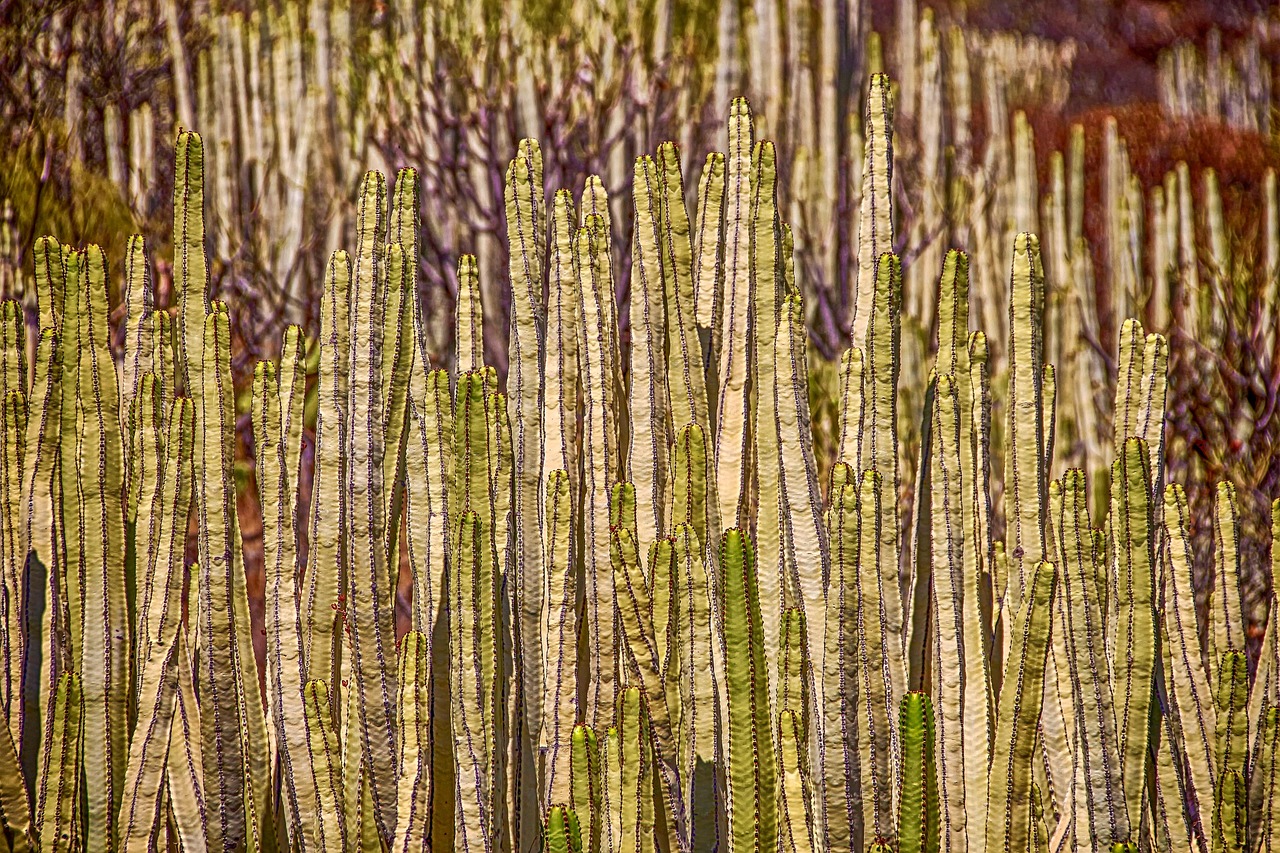Pruning columnar trees effectively encourages vertical growth by selectively removing lower branches and overcrowded foliage. Focus on maintaining the central leader to promote upward growth, while eliminating lateral branches that compete for sunlight. Timing is crucial; prune during dormancy in late winter or early spring to minimize stress and stimulate robust, healthy growth throughout the growing season.
Pruning columnar trees effectively encourages vertical growth by removing lateral branches and promoting a strong central leader. This technique enhances light penetration, improves airflow, and fosters a more upright growth habit, ultimately leading to a healthier and more aesthetically pleasing tree.
Understanding Columnar Trees
Columnar trees are unique in their growth habit, characterized by a narrow, upright form. They are ideal for small spaces and urban environments where horizontal space is limited. These trees can serve various purposes, such as providing shade, creating privacy screens, or enhancing landscape aesthetics. Their vertical growth makes them particularly appealing for gardeners looking to maximize space.

Many columnar tree varieties exist, including popular species like the ‘Sky Pencil’ Japanese holly and the ‘Slender Silhouette’ sweetgum. Each of these trees has distinct characteristics that make them suitable for different landscapes and climates. Understanding their growth patterns is essential for effective care, particularly when it comes to pruning.
The Importance of Pruning
Pruning is a vital practice in maintaining the health and appearance of columnar trees. It involves removing specific parts of the tree, such as branches, buds, or roots. When done correctly, pruning can lead to numerous benefits:
- Promotes Vertical Growth: Pruning encourages the tree to grow taller and more upright by focusing energy on the central leader.
- Enhances Light Penetration: Thinning out branches allows more sunlight to reach the interior of the tree.
- Improves Airflow: Proper pruning helps prevent disease by improving airflow around the foliage.
- Increases Aesthetic Appeal: A well-pruned tree has a cleaner appearance and can be shaped to fit desired design elements in the landscape.
Understanding the timing and techniques for pruning is essential to maximize these benefits. Performing cuts during the right season can significantly impact the tree’s growth and overall health.

When to Prune Columnar Trees
The timing of pruning is critical for columnar trees. Most experts recommend pruning during late winter or early spring before new growth begins. This timing minimizes stress on the tree and allows it to heal quickly as it enters its active growing phase. However, light pruning can also be performed during the summer months to remove any unwanted growth.
It is important to avoid heavy pruning in late summer or fall. Doing so can prompt new growth that may not have time to harden off before winter, increasing vulnerability to cold temperatures.
Pruning Techniques for Vertical Growth
To encourage vertical growth in columnar trees, specific pruning techniques should be employed:

- Central Leader Pruning: Identify the central leader, which is the main vertical stem of the tree. Ensure this leader remains dominant by removing competing branches that may hinder its growth.
- Lateral Branch Removal: Trim back lateral branches that extend outward. This will encourage the tree to focus energy on upward growth rather than side branching.
- Thinning Cuts: Make thinning cuts to reduce density within the canopy. This technique improves light penetration and airflow, promoting healthier growth.
- Shaping: Shape the tree as necessary to maintain its desired form while ensuring it remains upright and healthy. Regular shaping helps avoid excessive weight on one side.
Tools Needed for Pruning
Having the right tools is essential for effective pruning. The following tools are commonly used when pruning columnar trees:
| Tool | Description |
|---|---|
| Hand Pruners | Ideal for cutting small branches up to ¾ inch thick. |
| Loppers | Useful for branches thicker than what hand pruners can handle, providing additional leverage. |
| Saw | A small pruning saw is necessary for larger branches that require more power to cut through. |
| Safety Gear | Gloves and eye protection are important for personal safety during pruning activities. |
Using sharp, clean tools is crucial for making clean cuts that promote quick healing in the tree. Additionally, disinfecting tools between uses can help prevent the spread of diseases from one tree to another.
The art of pruning requires knowledge and practice. By understanding the specific needs of columnar trees and employing effective pruning techniques, you can encourage their vertical growth while enhancing their health and beauty in your landscape.

Common Mistakes in Pruning Columnar Trees
While pruning can significantly benefit columnar trees, improper techniques can lead to adverse effects. Understanding common mistakes is essential for achieving the desired results. Here are several mistakes to avoid:
- Over-Pruning: Removing too many branches can stress the tree. This might lead to weak growth and reduced vigor. Always follow the one-third rule, which suggests not removing more than one-third of the tree’s foliage in a single pruning session.
- Improper Cuts: Making jagged or incorrect cuts can harm the tree. Always use sharp tools, and make clean cuts at an angle to promote healing.
- Ignoring Tree Health: Pruning should only be done on healthy trees. If a tree is stressed due to disease or environmental factors, it may be better to postpone pruning.
- Pruning at the Wrong Time: Timing is critical. Pruning during the wrong season can lead to excess sap loss or damage from cold weather. Always prune in late winter or early spring.
Seasonal Considerations for Pruning
The timing of pruning can have a profound impact on the growth and health of columnar trees. Seasonal considerations are crucial for optimal results. Here is a breakdown of what to consider during each season:
Spring
Spring is an ideal time for pruning as the tree is preparing for new growth. Here are some activities to focus on:
- Remove any dead or damaged branches that may have been affected during winter.
- Trim back any lateral growth to encourage upward growth.
Summer
Light pruning can be performed during summer months to manage growth. Key actions include:
- Identifying and removing any overly vigorous shoots that detract from the tree’s shape.
- Thinning out excess foliage to improve light and airflow.
Fall
Avoid heavy pruning in the fall. Instead, focus on general maintenance:
- Inspect the tree for signs of disease or infestation.
- Prepare tools for winter storage and ensure they are clean and sharp for spring.
Winter
Winter is often considered dormancy for trees. However, if the weather permits, light pruning can still be done:
- Remove any branches that pose a risk of breaking under snow or ice weight.
- Make cuts on healthy trees to prepare for vigorous growth in spring.
Signs Your Columnar Tree Needs Pruning
Regular observation is vital for identifying when columnar trees require pruning. Here are some signs to look out for:
- Excessive Lateral Growth: If branches begin extending outward significantly, it indicates that the tree may need pruning to promote vertical growth.
- Dead or Diseased Branches: Dead branches can attract pests and diseases, making it crucial to remove them promptly.
- Crowded Canopy: If foliage becomes too dense, light penetration decreases. Thinning the canopy can promote healthier growth.
- Weak Structure: Trees with multiple competing leaders may have weaker structures. Pruning should focus on reinforcing a single leader.
Benefits of Properly Pruned Columnar Trees
The advantages of maintaining well-pruned columnar trees extend beyond mere aesthetics. Here are several key benefits:
- Enhanced Growth Rate: Proper pruning encourages faster vertical growth by directing energy towards the central leader and reducing competition among branches.
- Improved Health: Thinning out dense foliage helps reduce the likelihood of diseases and pest infestations.
- Aesthetic Appeal: A well-pruned tree contributes significantly to landscape beauty, providing a clean, structured appearance that enhances property value.
- Easier Maintenance: Regular pruning makes future maintenance simpler, as it helps maintain shape and health over time.
Long-Term Care for Columnar Trees
Caring for columnar trees is a long-term commitment that goes beyond pruning. Consider these essential practices to ensure their ongoing health and vitality:
- Watering: Ensure consistent watering, especially during dry spells. Deep watering encourages strong root development.
- Fertilization: Apply balanced fertilizers in the spring to support new growth. Soil testing can help determine specific nutrient needs.
- Pest Management: Regularly inspect for pests and diseases. Early detection allows for timely intervention, minimizing damage.
- Mulching: Apply mulch around the base of the tree to retain moisture and suppress weeds while regulating soil temperature.
Caring for columnar trees through proper pruning and maintenance ensures they thrive in your landscape, providing beauty and functionality for years to come.
Advanced Pruning Techniques for Columnar Trees
To achieve optimal vertical growth in columnar trees, advanced pruning techniques can be implemented. These methods go beyond basic pruning and require a deeper understanding of tree physiology and structure.
Heading Cuts
Heading cuts involve trimming the tips of branches to promote bushier growth lower on the branch. This technique can be beneficial for columnar trees that tend to grow too tall too quickly. By making heading cuts, you encourage lateral growth while still maintaining an overall vertical structure.
Thinning Cuts
Thinning cuts remove entire branches back to their point of origin. This method is essential for improving air circulation and light penetration within the canopy. Thinning is particularly effective in promoting the health of columnar trees, as it can help prevent fungal diseases that thrive in dense foliage.
Techniques for Specific Tree Varieties
Different columnar tree varieties may respond better to specific pruning techniques. Understanding the characteristics of each type can enhance your pruning strategy. Below are some common columnar tree species and recommended techniques for each:
| Tree Variety | Recommended Pruning Technique |
|---|---|
| ‘Sky Pencil’ Japanese Holly | Use heading cuts to maintain height and encourage denser foliage at the base. |
| ‘Slender Silhouette’ Sweetgum | Focus on thinning cuts to promote a strong central leader and reduce weight on lateral branches. |
| Columnar Norway Maple | Regularly thin out branches to maintain shape and enhance light penetration. |
| Columnar Black Cherry | Encourage a single leader by removing competing branches early in growth. |
Understanding Tree Growth Patterns
Recognizing how columnar trees grow is crucial for effective pruning. Their vertical growth habits often lead to unique challenges. Understanding these patterns can guide your pruning decisions:
Apical Dominance
Apical dominance refers to the phenomenon where the main central stem of the tree grows more vigorously than other side branches. This characteristic is vital for columnar trees, as it helps maintain their upright structure. When pruning, it is essential to preserve this dominance by ensuring that no lateral branches compete with the central leader.
Lateral Growth Management
Lateral growth is significant for tree shape but must be managed carefully. Excessive lateral branches can lead to a sprawling appearance, which detracts from the intended vertical growth. Regular monitoring and timely pruning can help control lateral growth effectively.
Environmental Factors Affecting Growth
Certain environmental factors can influence how well columnar trees grow and how effective your pruning efforts are. Awareness of these factors is important:
- Sunlight: Columnar trees require full sun for optimal growth. Insufficient sunlight can lead to weak growth and increased susceptibility to disease.
- Soil Quality: Well-draining soil rich in organic matter promotes strong root development, supporting healthier vertical growth.
- Water Availability: Adequate watering, especially during dry periods, is crucial for maintaining healthy growth.
- Pest Pressure: Higher pest populations can stress trees, making them less resilient and requiring more frequent pruning interventions.
Post-Pruning Care
After pruning, proper care is essential to help the tree recover and thrive. Here are some key post-pruning care steps:
- Watering: Ensure the tree receives adequate water after pruning. This will help it recover from any stress caused by the cuts.
- Nourishment: Apply a balanced fertilizer a few weeks after pruning to support new growth.
- Monitoring: Keep an eye on the tree for signs of stress or disease after pruning. Early detection allows for timely interventions.
- Avoiding Additional Stress: Limit other stressors, such as heavy foot traffic around the base or additional landscaping work nearby.
The Role of Professional Arborists
If you feel uncertain about how to prune your columnar trees effectively, hiring a professional arborist can be beneficial. Arborists have specialized training and experience in tree care, offering several advantages:
- Expert Assessment: Arborists can evaluate the health and structure of your trees, providing tailored recommendations for care.
- Proper Techniques: They are skilled in using the right techniques that promote healthy growth without damaging the tree.
- Safety Measures: Pruning tall or large trees can be dangerous. Professionals have the necessary equipment and training to ensure safe practices.
Caring for columnar trees through advanced pruning techniques, understanding growth patterns, and post-pruning care will ensure that your trees thrive beautifully in your landscape for years to come.
Enhancing Landscape Design with Columnar Trees
Columnar trees serve not only as functional plants but also as striking design elements in landscape architecture. Their unique growth habit allows them to fit seamlessly into various landscape designs, whether in residential gardens or public parks. Here are some ways to enhance your landscape using columnar trees:
- Vertical Accents: Use columnar trees to create vertical lines in a landscape. They can add height and structure without taking up much horizontal space.
- Privacy Screens: Plant columnar trees in rows to create natural privacy screens. Their dense foliage can effectively block noise and views from neighbors.
- Framing Features: Position columnar trees to frame entryways, pathways, or other focal points in the garden, drawing attention to specific areas.
- Seasonal Interest: Choose varieties that offer seasonal changes, such as vibrant fall foliage or interesting bark textures. This adds visual interest throughout the year.
Columnar Trees and Sustainability
Incorporating columnar trees into your landscape can also contribute to sustainability efforts. Here are several environmental benefits associated with these trees:
- Carbon Sequestration: Trees play a significant role in absorbing carbon dioxide from the atmosphere, helping to mitigate climate change.
- Soil Erosion Prevention: The root systems of columnar trees help stabilize soil, reducing erosion and promoting better water retention.
- Biodiversity Support: Columnar trees can provide habitats for various wildlife, including birds and beneficial insects, contributing to overall ecosystem health.
- Stormwater Management: Trees can help absorb rainwater, reducing runoff and aiding in natural filtration processes.
Common Columnar Tree Varieties for Homeowners
When selecting columnar trees for your landscape, consider these popular varieties known for their upright growth and aesthetic appeal:
| Tree Variety | Key Features | Ideal Conditions |
|---|---|---|
| ‘Sky Pencil’ Japanese Holly | Narrow, upright growth; evergreen foliage. | Full sun to partial shade; well-drained soil. |
| ‘Emerald Green’ Arborvitae | Dense, green foliage; great for privacy screens. | Full sun; adaptable to various soil types. |
| ‘Slender Silhouette’ Sweetgum | Tall and narrow form; colorful fall leaves. | Full sun; moist, well-drained soil. |
| Columnar Norway Maple | Vibrant fall color; adaptable and hardy. | Full sun; tolerant of urban conditions. |
Challenges in Pruning Columnar Trees
While pruning columnar trees brings numerous benefits, it can also present challenges. Some common issues include:
- Understanding Growth Patterns: Not all columnar trees grow at the same rate. Some may require more frequent pruning than others based on their specific growth habits.
- Pest Infestations: Pruned trees can attract pests if not monitored closely. Regular inspections are necessary to identify problems early.
- Environmental Stress: Factors such as drought or extreme temperatures can stress trees, making them more susceptible to damage during pruning.
Final Thoughts
Pruning columnar trees is an essential practice that promotes vertical growth and enhances the overall health and aesthetics of these unique plants. By employing proper techniques and understanding the specific needs of various tree species, you can ensure that your columnar trees thrive in your landscape. Remember that regular maintenance, including watering, pest management, and timely pruning, will contribute significantly to the longevity and beauty of your trees.
Incorporating columnar trees into your landscape design not only provides visual appeal but also supports ecological sustainability. Whether you’re looking to create a tranquil garden space or a lively urban environment, columnar trees offer versatility and elegance. With the right care and attention, these remarkable trees can flourish and provide benefits for many years to come.
If you’re ever uncertain about your pruning practices or the health of your trees, consider consulting a professional arborist. Their expertise can provide valuable insights and help you nurture a vibrant landscape filled with healthy, thriving columnar trees.
